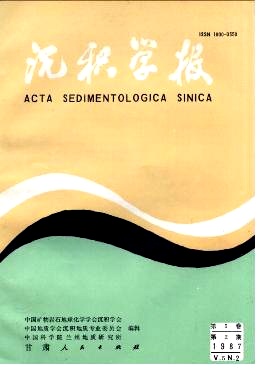SPIRODESMOS KAIHUAENSIS IN THE UPPER ORDOVICIAN FLYSCH IN THE KAIHUA COUNTY, WEST PART OF ZHEJIANG PROVINCE
- Publish Date: 1987-06-10
Abstract: The Yuqian group (or Changwu group) in the west part of Zhejiang province is a set of flysch formation with thickness about 2,000m, in which many kinds of trace fossils are found. In this paper, we only discuss the new species ( Spirode-smos kaihuaensis ) found in kaihua County ( Fig. l ). Spirodesmos kaihuaensis, distributed along the bedding surface, is elliptical, multi-annular, with 3-5 rings. The major axis( A) of the ellipse is up to 35cm, the minor axis ( B ) is up to 18.5cm, and ratio ( A/B ) is about 2. All of the major axis of the elliptical traces are parallel to each other in the NE direction. The authors consider that the traces were produced by some animals which have no hard shells. The animals ploughed sediments in a round way, depending on their innate thigmotaxis and strophotaxis and developing the ringlike traces when they were looking for food. The major axes of the elliptical trace are parallel to the direction of water flow as a result of the pushing force of water flow on the organism, the animals prefered to move in the direction parallel to the water flow rather than perpendicular to it so as to reduce the pushing force of water flow. The trace fossils coexist with many kinds of sedimentary structures, such as symmetric wave marks, interference wave marks, foreset beddings, lenticular beddings etc. , showing a shallow water environment. From all kinds of data, authors concluded that Spirodesmos Kaihuaensis was formed in a subtidal zone of a gulf, which was situated in the north side of the southwest part of the Early palaeozoic sedimentary basin in the west part of Zhe-jiang province. This area was near to an old land which supplied an abundence of organic matter to the basin. In the area there existed a bottom current with lower kinetic energy, flowing in a uniform direction. The water bottom was influenced by wave accasionally. Such an environment benefited trace fossils.
| Citation: | Xia Bangdong, Lü Hongbo, Xiong Binhui, He Yongming, Hu Baosheng. SPIRODESMOS KAIHUAENSIS IN THE UPPER ORDOVICIAN FLYSCH IN THE KAIHUA COUNTY, WEST PART OF ZHEJIANG PROVINCE[J]. Acta Sedimentologica Sinica, 1987, 5(2): 71-80. |






 DownLoad:
DownLoad: